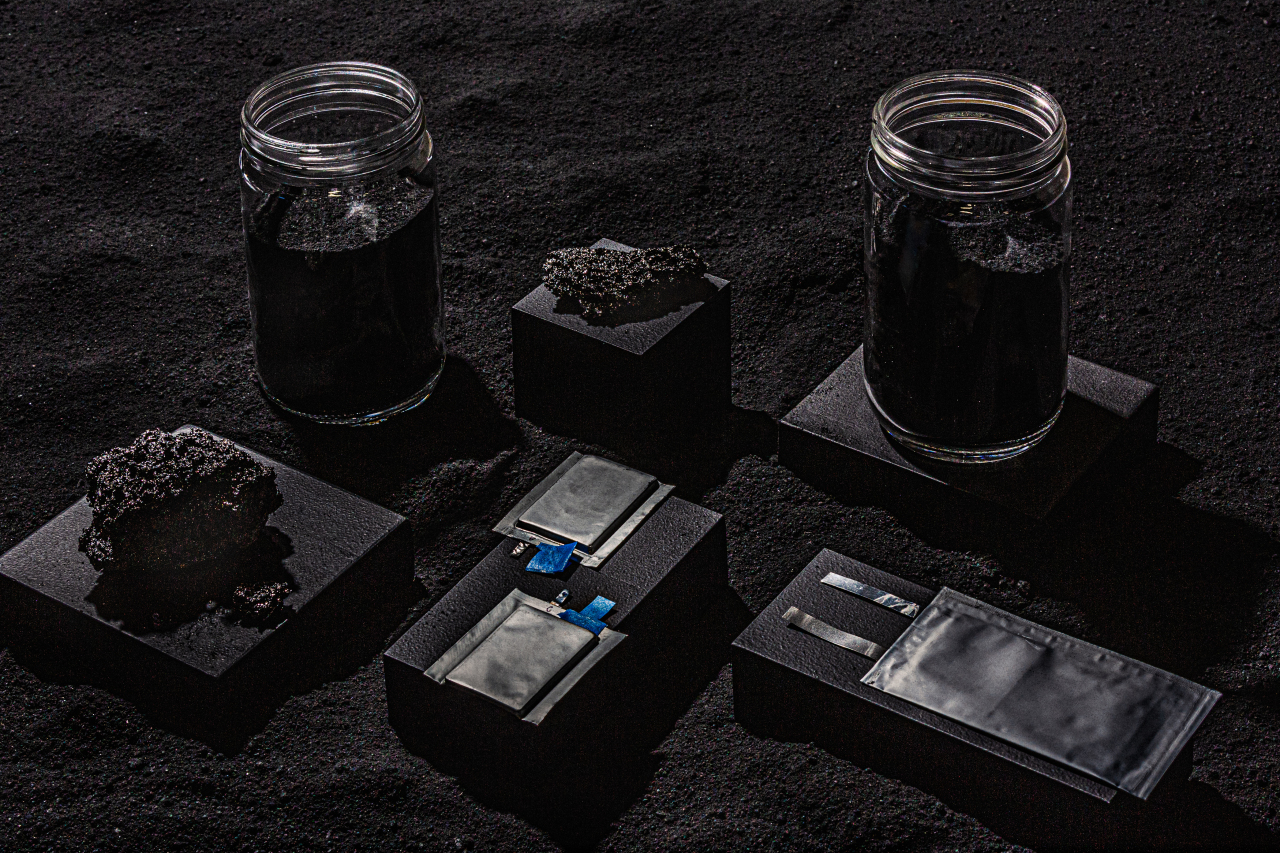 |
Group14 Technologies CEO Rick Luebbe (Group14 Technologies) |
What battery manufacturers want is simple: to make their batteries more powerful.
To this end, battery makers are taking various efforts to innovate their recipes, including putting more nickel inside cathodes or silicon in graphite anodes.
They also form technological partnerships, and the latest example is the joint venture created by SK Materials and Group14 Technologies.
On Monday, SK Materials, SK Group’s industrial gas manufacturing arm, announced its $52 million investment in a joint venture with the US-based battery materials startup to manufacture next-generation anodes.
During an interview with The Korea Herald, Group14 CEO Rick Luebbe said that instead of simply mixing silicon with graphite, creating sponge-like carbon and filling the holes with silicon can make anodes much thinner and 50 percent more powerful.
“We can either find ways to make cathode materials more energy dense, or put more cathodes materials inside batteries. Group14 can shrink the anodes significantly. We can go from potentially to 60 percent of the volume of the battery cell down to maybe as little as 25 percent of the volume,” Luebbe said.
The CEO added that Group14 is working with most of the large global battery partners, potential customers including SK Innovation, CATL, Samsung and General Motors. SK Materials and Group14 plan to invest $52 million and $17 million, respectively, to set up a silicon-carbon anode manufacturing plant in South Korea.
Typical silicon-graphite anodes can contain just 5-8 percent of silicon because silicon expands when it absorbs lithium ions. If too much silicon is inside anodes, batteries swell and eventually degrade. However, Group14 can fill anodes with a much higher portion of silicon by providing enough room for the silicon to expand.
“It’s like taking a sponge and partially filling those pores with silicon, about half the pores empty. Because we’ve left empty space, silicon expands within the pore. This reduces the mechanical stresses on the battery, and allows a long cycle life,” Luebbe said.
 |
Group14 Technologies’ carbon-silicon anodes (Group14 Technologies) |
One silicon particle absorbs four lithium-ions, whereas six particles of graphite can accommodate one lithium ion. When silicon particles absorb lithium ions and expand, they don’t return to their original size. Group14’s sponge-like carbon acts like scaffolding and helps the silicon maintain their size.
Group14’s silicon-carbon anodes can make batteries five times more powerful than those equipped with graphite-based anodes, according to the company.
Group14 has a commercial-scale plant in Washington with an annual production capacity of 120 metric tons. The SK Materials-Group14 joint venture aims to add another plant in Korea and ramp up capacity to more than 2,000 tons.
Above all, the CEO added that silicon-carbon anodes are similar to graphite-based anodes and therefore compatible with existing battery manufacturing facilities. This offers a competitive edge against other next-generation anodes, such as lithium-metal anodes, which use completely different materials.
“The concept of having to build a lithium-metal anode battery factory, that’s a lot of changes. The production, the cell design would be completely different. So lithium-metal anodes will require tremendous capital investments. But silicon-carbon anodes don’t require any additional capital expenditures at all, just drop right in,” Luebbe said.
“Lithium metal anodes have a lot of challenges with commercialization as they have challenges with dendrite formation. Silicon-carbon anodes theoretically hold about the same amount of lithium-metal anodes, so silicon-carbon carbon anodes are equivalent to technologies that are proposed tomorrow,” he said.
Startups including SolidEnergy Systems, QuantumScape and SolidPower are developing batteries with lithium-metal anodes, but have yet to resolve dendrite issues.
When batteries are charged and discharged over time, lithium ions pile up to form needles called dendrites. When these needles grow long enough to puncture separators -- the thin plastic walls dividing cathodes and anodes -- short circuits occur, and batteries catch fire. Lithium-metal anodes are more susceptible to dendrites than graphite anodes.
SolidState Energy, which aims to commercialize lithium-metal anodes by 2025, have not resolved the dendrite issues completely yet. Silicon-carbon anodes as well as silicon-graphite anodes are relatively safe from dendrite issues.
As to why Group14 and SK Materials decided to form a joint venture, the CEO said it was “serendipitous.”
For Group14 to manufacture sponge-like carbon, it requires a special gas, which SK Materials specializes in.
“It was really just perfect timing because at the same time the SK team was really interested in advanced battery technologies. So it was very serendipitous,” the CEO said.
SK Materials holds a 75 percent stake in the joint venture, with the rest held by Group14.
By Kim Byung-wook (
kbw@heraldcorp.com)









